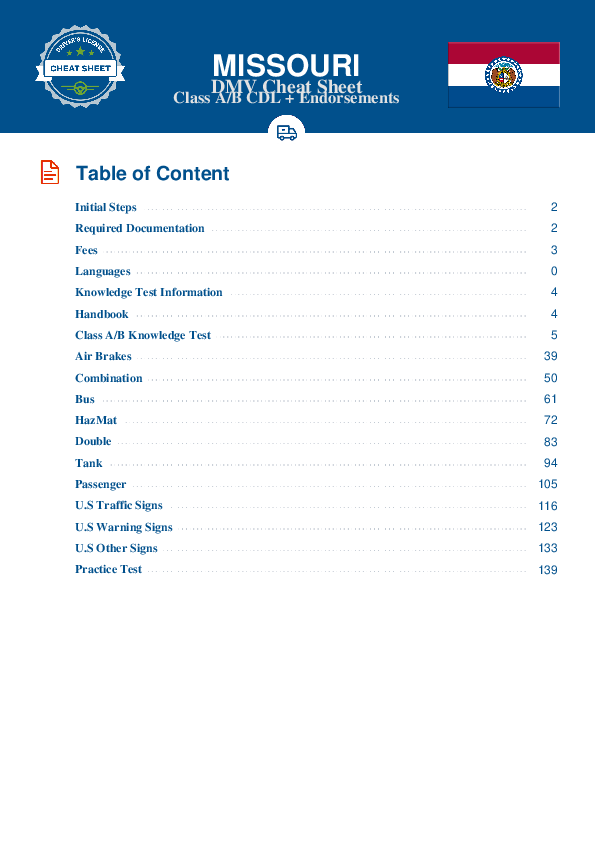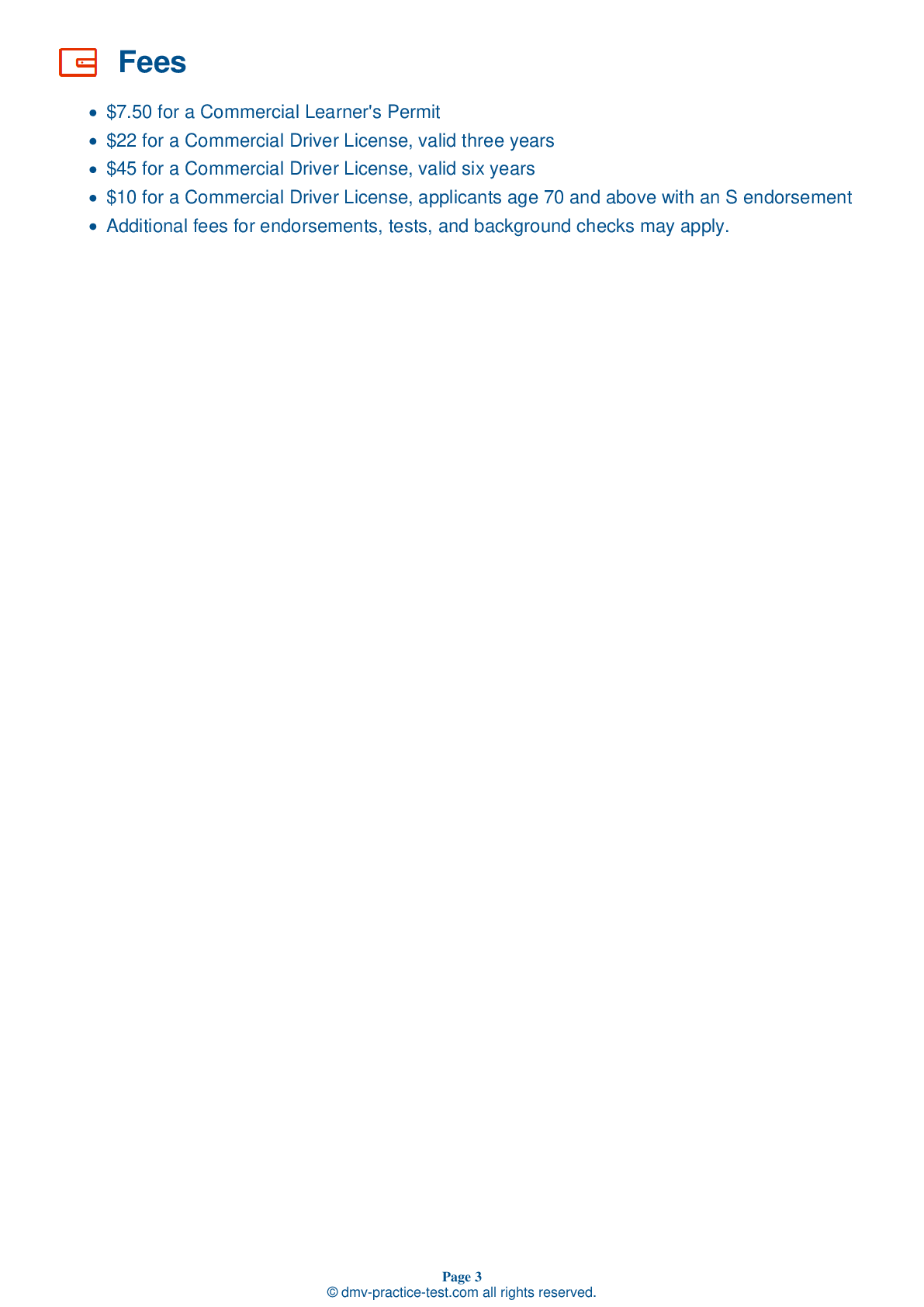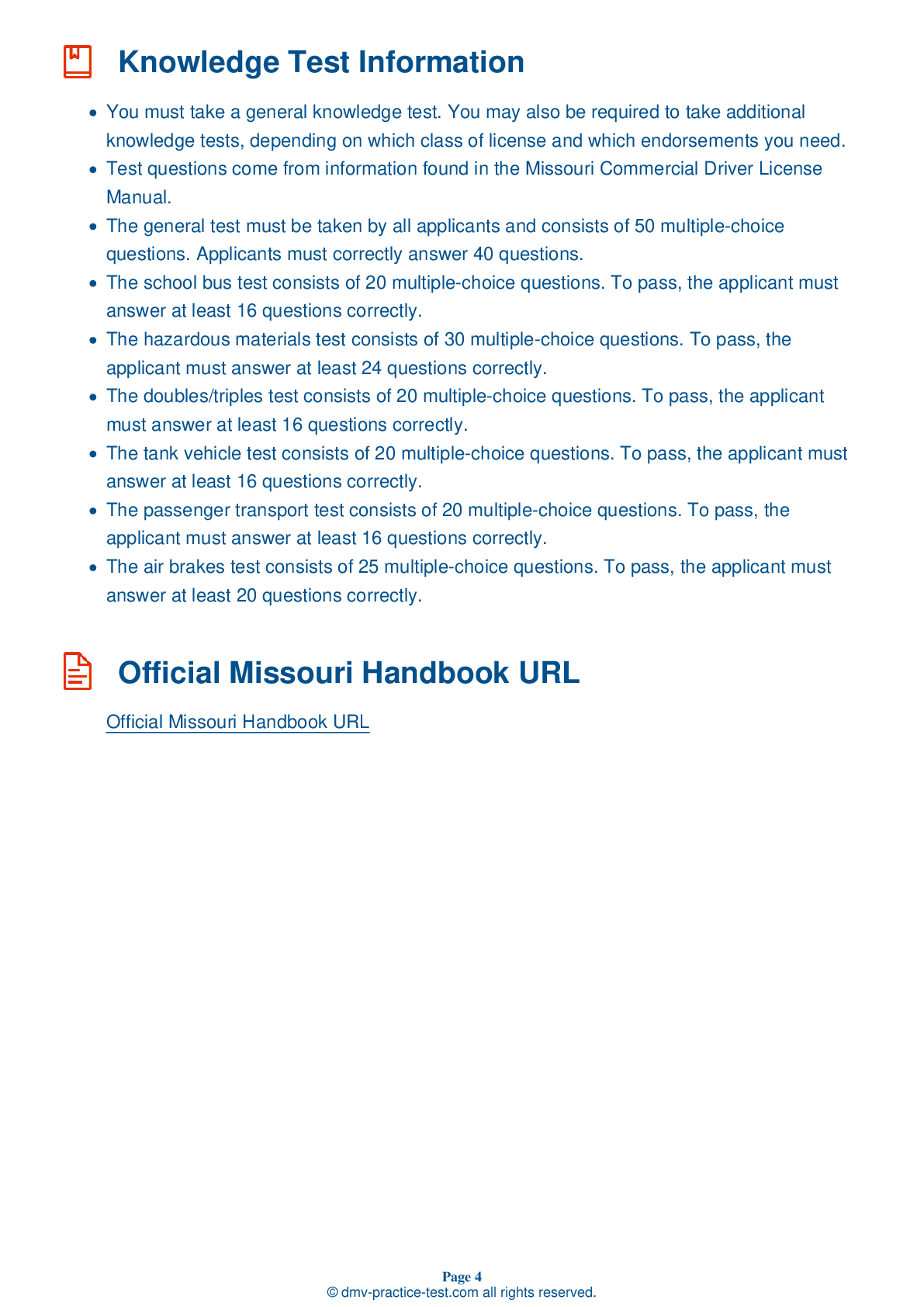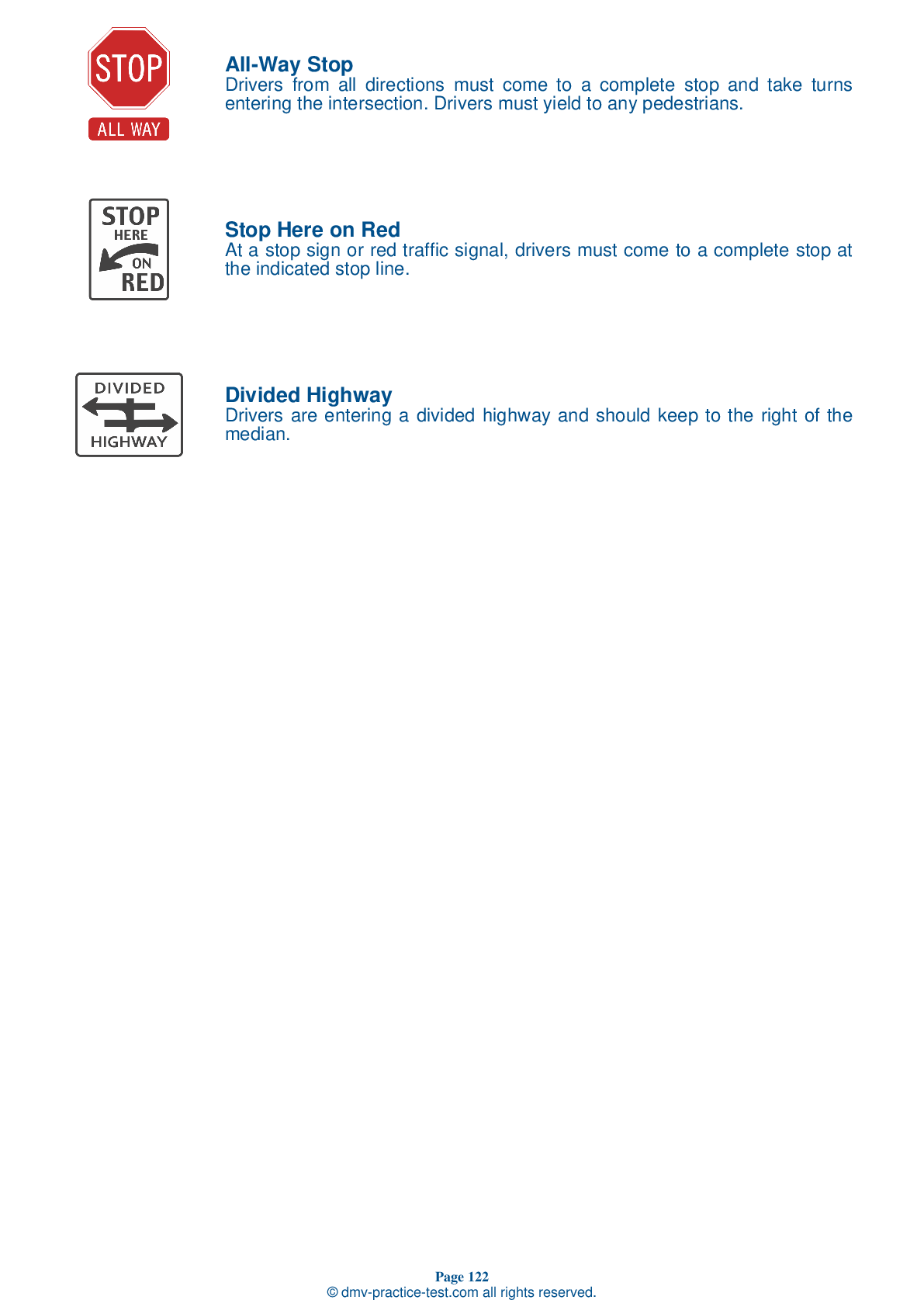Passenger #1
Passenger Endorsement | Missouri 2025 #1 Page 2 of 3
Train for FREE with our Missouri CDL passenger endorsement practice test online. The official exam test consists of several obligatory parts, with all of them checking your knowledge of different blocks of road rules. If you need to obtain a MO DMV passenger endorsement in 2025, practice as much as possible. Free sample tests published on our website will help you check and improve your knowledge and boost your grades. Please bear in mind that DMV requirements for issuing a CDL permit with passenger endorsement may vary from state to state.
20
16
20
8 . When approaching your vehicle as part of your pre-trip inspection, you should look for what as a sign of trouble?
When approaching your vehicle for an inspection, you should look underneath the vehicle for fresh leaks of oil, coolant, grease, or fuel. Seeing a fresh puddle of any of these fluids could indicate a safety issue with your vehicle.
9 . Which of the following groups of people is not covered by move over laws?
Move over laws state that when approaching a stopped emergency vehicle, a driver must slow down and merge into a lane that is not next to the stopped vehicle. If a lane change is not possible, drivers should slow to a safe speed and pass with caution.
10 . When backing with a trailer, turning toward the driver’s side is encouraged:
If you must back up, it is safest to back toward the driver's side of the vehicle. This way, as the driver, you will have the best possible view of your path of travel.
11 . When starting a vehicle, the oil pressure should:
Oil pressure should come up to normal within seconds of starting the engine.
12 . Which of the following is not required emergency equipment?
All commercial motor vehicles are required to be equipped with the proper emergency equipment. This may include spare electrical fuses; three red reflective triangles, six fuses, or three liquid burning flares; and at least one properly charged and rated fire extinguisher. Optional equipment includes tire chains, tire changing equipment, a list of emergency phone numbers, and an accident reporting kit/packet.
13 . When using your turn signal, you should:
Always begin signaling well in advance of a turn. This is the best way to ensure that other drivers do not try to pass you. Without using a turn signal, drivers may assume that you are merely slowing down or stopping when you are planning to turn.
14 . Using a helper when backing up a large vehicle is:
Backing a CMV is always dangerous due to limited visibility, so using a helper to monitor your blind spots is encouraged whenever possible.
2025 Missouri | Frequently Asked Questions
A CDL Class A license in Missouri is defined as a commercial driver's license that allows the holder to operate any combination of vehicles with a Gross Combination Weight Rating (GCWR) of 26,001 pounds or more, given that the Gross Vehicle Weight Rating (GVWR) of the vehicle(s) being towed is over 10,000 pounds.
A Class A Commercial Driver's License (CDL) in Missouri allows operation of any combination of vehicles with a Gross Combination Weight Rating (GCWR) of 26,001 pounds or more, provided the Gross Vehicle Weight Rating (GVWR) of the vehicle(s) being towed exceeds 10,000 pounds. Examples include tractor-trailers, truck and trailer combinations, tank vehicles, livestock carriers, and flatbeds.
To obtain a Class A CDL in Missouri, you must be at least 18 years old (21 for interstate travel), possess a valid non-commercial driver's license, and pass a vision test. You also need to pass the written knowledge test and skills tests, which include a pre-trip vehicle inspection, a basic vehicle control test, and an on-road driving exam.
In Missouri, to qualify for a Class A Commercial Driver's License (CDL), you must be at least 18 years old. However, if you plan on driving across state lines or want to qualify to drive a vehicle carrying hazardous materials, you must be at least 21 years old.
While specific endorsements are not required to obtain a Class A CDL in Missouri, they can provide additional driving privileges. Endorsements include T for double/triple trailers, P for passenger vehicles, N for tank vehicles, H for hazardous materials, S for school bus, and X for a combination of tank vehicle and hazardous materials. Each endorsement requires passing additional tests.
The Class A CDL skills test in Missouri encompasses three parts: the Vehicle Inspection Test, the Basic Controls Test, and the Road Test. The Vehicle Inspection Test checks your ability to assess the safety of your vehicle. The Basic Controls Test evaluates your control over the vehicle. The Road Test examines your on-road driving skills.
Yes, there are limitations on Class A CDL license holders in Missouri. These could include restrictions related to corrective lenses, automatic transmission, no passengers, intrastate driving only, or no air brakes. Restrictions are based on the driver's abilities, the type of vehicle used during the driving test, and any medical conditions.
In Missouri, the written Class A CDL test is primarily administered in English. However, some locations may offer the test in Spanish. It's important to check with your local testing center for language options. Please note, even if the test is taken in another language, federal regulations require all CDL holders to read and speak English.
Yes, you can request accommodations for the Class A CDL written test in Missouri if you have a disability. The Missouri Department of Revenue is committed to making testing accessible. You should contact the department or your local testing center ahead of time to discuss your needs and arrange for appropriate accommodations.
Yes, you can retake the Class A CDL written test in Missouri if you don't pass on your first attempt. You must wait at least one day before retaking the test. However, if you fail the test four times, you have to wait a minimum of 30 days before your next attempt. Additional fees may also apply for each retest.



